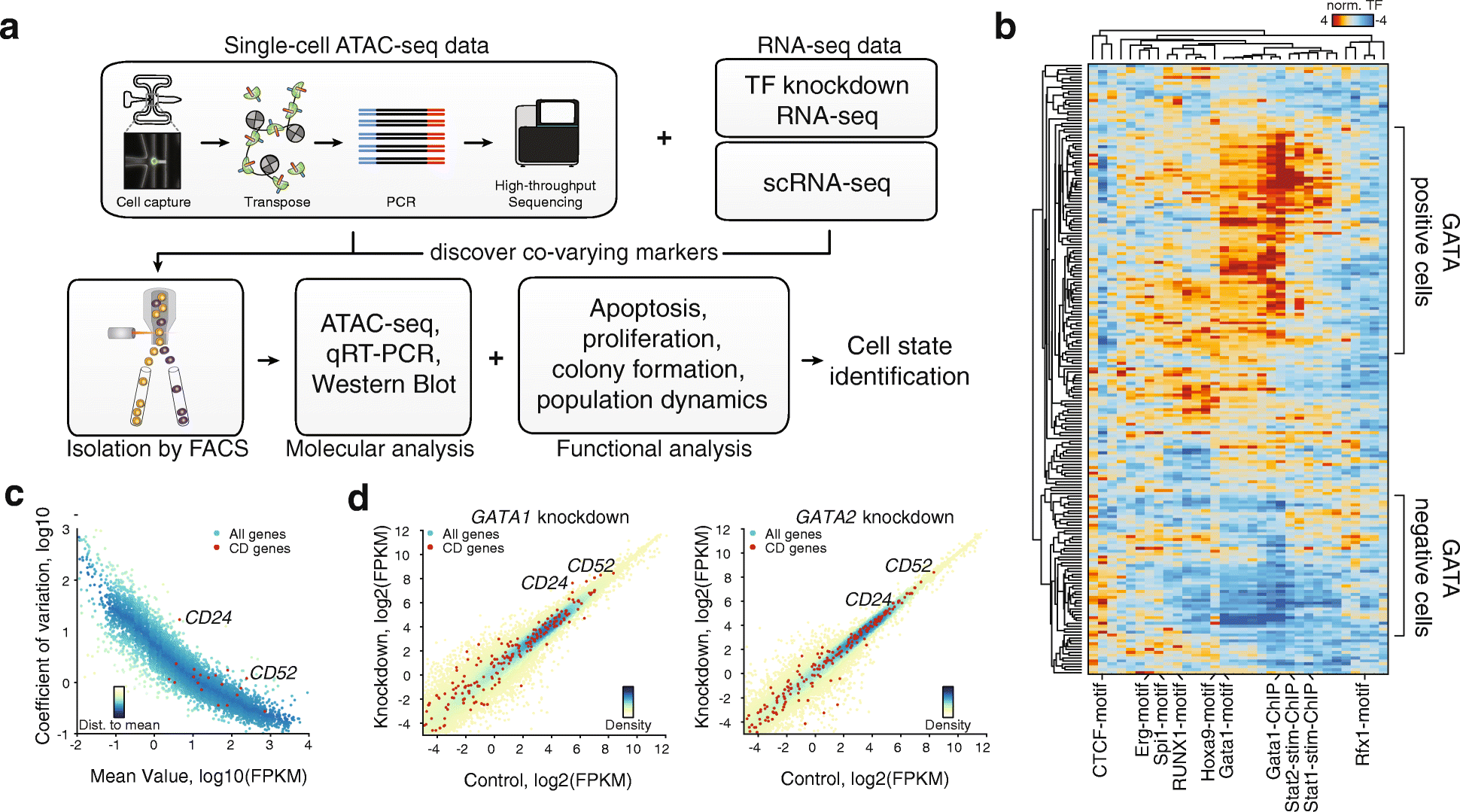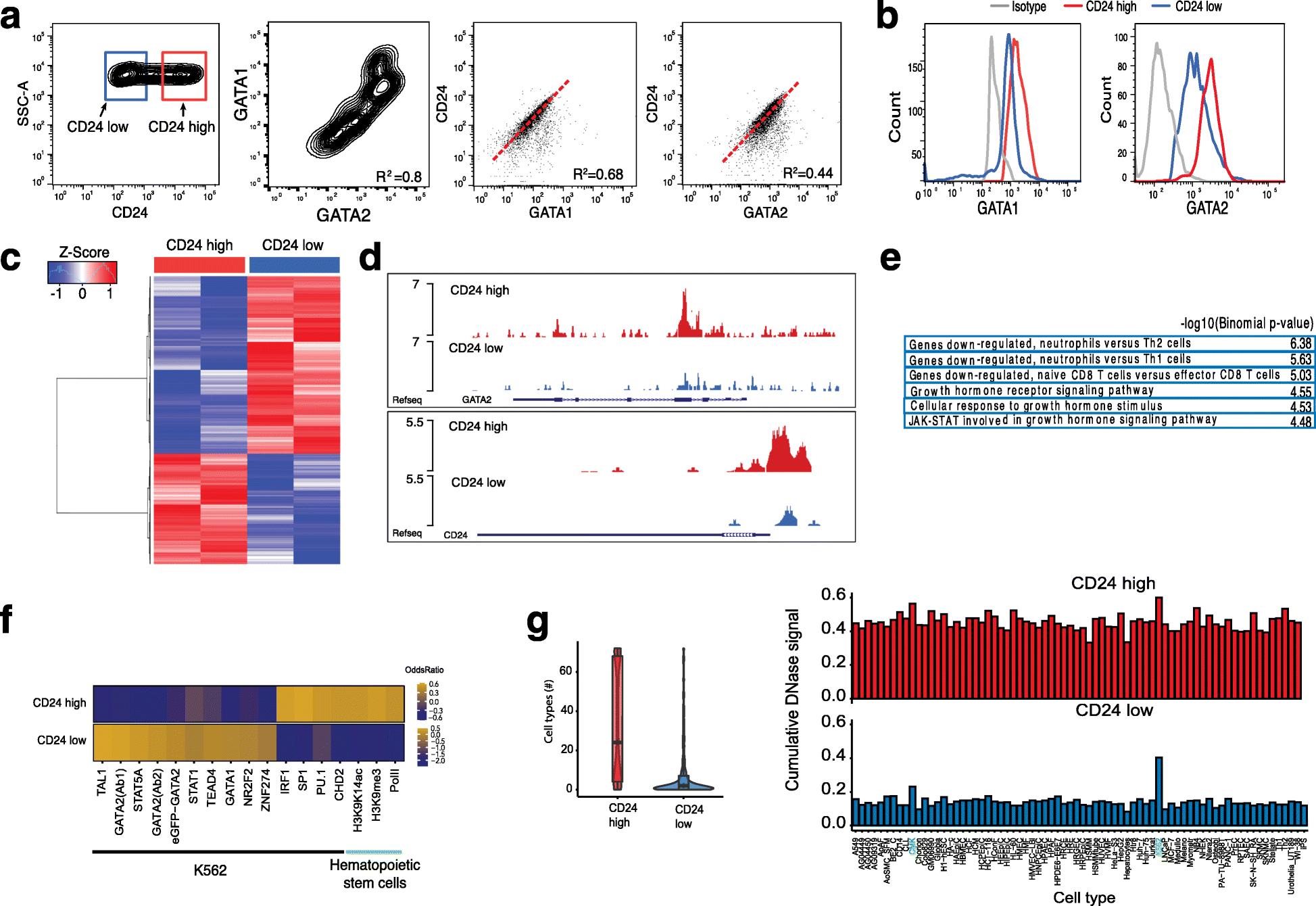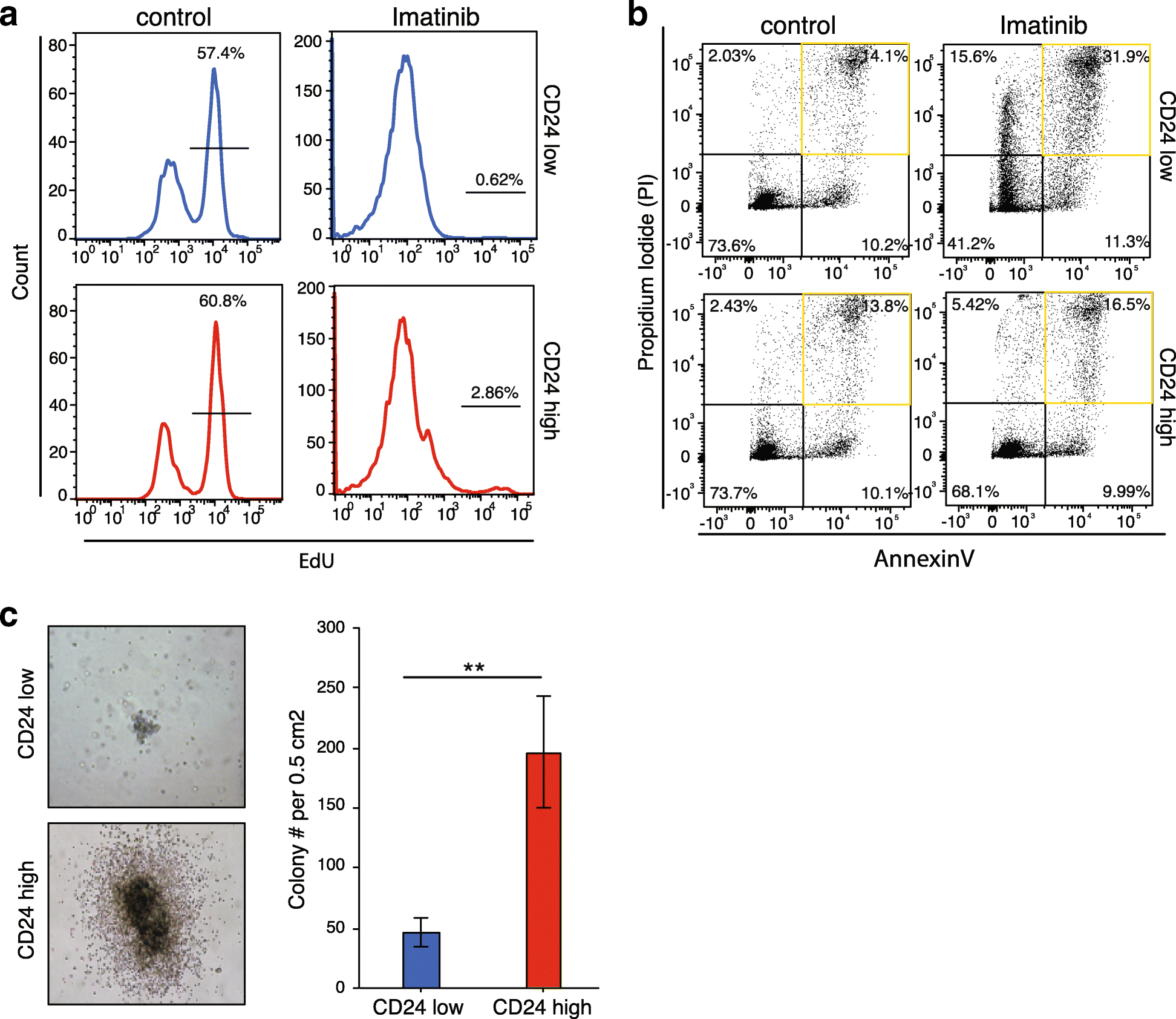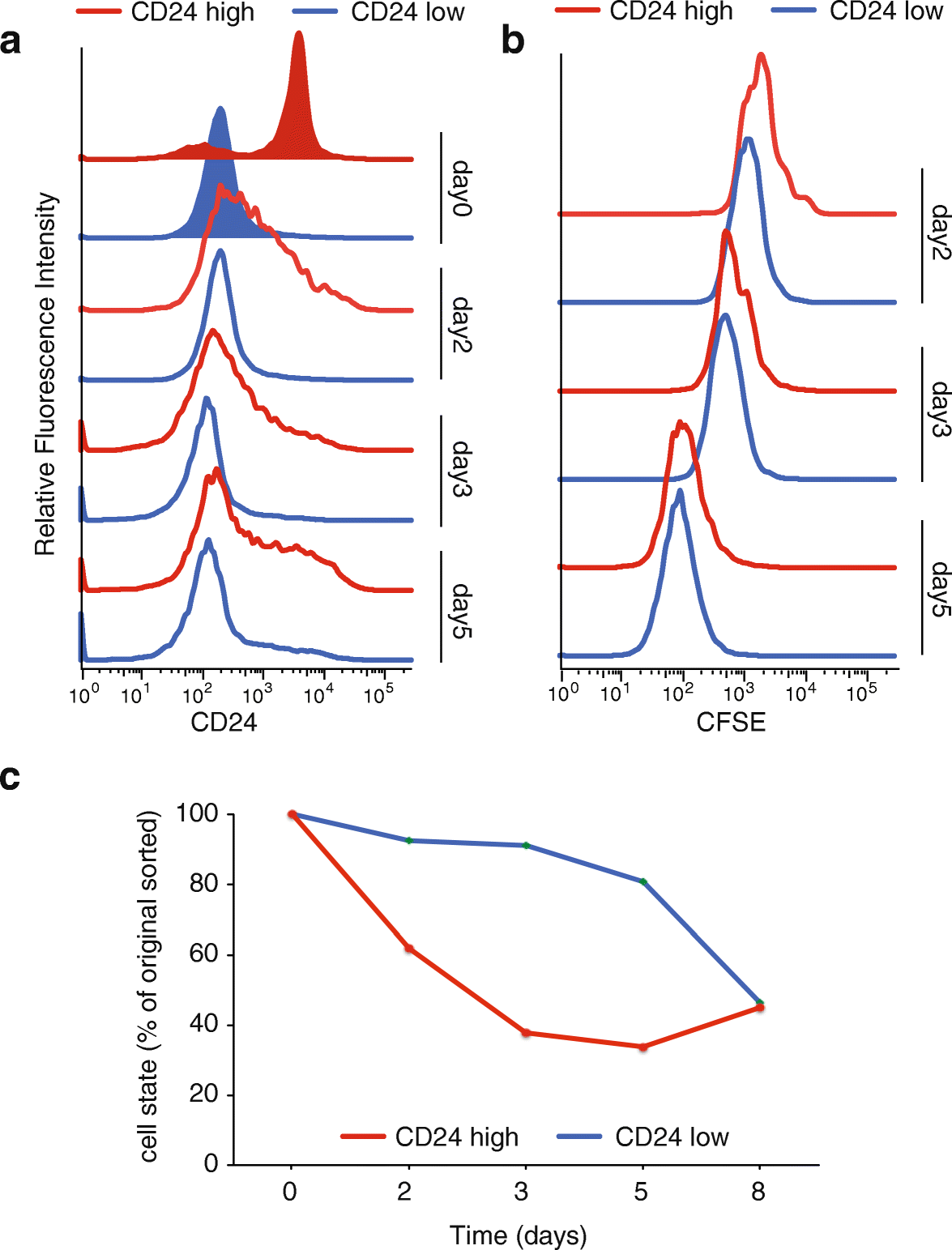Single-cell epigenomic variability reveals functional cancer heterogeneity
- PMID: 28118844
- PMCID: PMC5259890
- DOI: 10.1186/s13059-016-1133-7
Single-cell epigenomic variability reveals functional cancer heterogeneity
Abstract
Background: Cell-to-cell heterogeneity is a major driver of cancer evolution, progression, and emergence of drug resistance. Epigenomic variation at the single-cell level can rapidly create cancer heterogeneity but is difficult to detect and assess functionally.
Results: We develop a strategy to bridge the gap between measurement and function in single-cell epigenomics. Using single-cell chromatin accessibility and RNA-seq data in K562 leukemic cells, we identify the cell surface marker CD24 as co-varying with chromatin accessibility changes linked to GATA transcription factors in single cells. Fluorescence-activated cell sorting of CD24 high versus low cells prospectively isolated GATA1 and GATA2 high versus low cells. GATA high versus low cells express differential gene regulatory networks, differential sensitivity to the drug imatinib mesylate, and differential self-renewal capacity. Lineage tracing experiments show that GATA/CD24hi cells have the capability to rapidly reconstitute the heterogeneity within the entire starting population, suggesting that GATA expression levels drive a phenotypically relevant source of epigenomic plasticity.
Conclusion: Single-cell chromatin accessibility can guide prospective characterization of cancer heterogeneity. Epigenomic subpopulations in cancer impact drug sensitivity and the clonal dynamics of cancer evolution.
Keywords: Cancer stem cells; Gene expression noise; Open chromatin.
Figures




Similar articles
-
Joint single-cell DNA accessibility and protein epitope profiling reveals environmental regulation of epigenomic heterogeneity.Nat Commun. 2018 Nov 2;9(1):4590. doi: 10.1038/s41467-018-07115-y. Nat Commun. 2018. PMID: 30389926 Free PMC article.
-
EpiCHAOS: a metric to quantify epigenomic heterogeneity in single-cell data.Genome Biol. 2024 Dec 3;25(1):305. doi: 10.1186/s13059-024-03446-w. Genome Biol. 2024. PMID: 39623476 Free PMC article.
-
High-throughput single-cell chromatin accessibility CRISPR screens enable unbiased identification of regulatory networks in cancer.Nat Commun. 2021 May 20;12(1):2969. doi: 10.1038/s41467-021-23213-w. Nat Commun. 2021. PMID: 34016988 Free PMC article.
-
Single-cell sequencing techniques from individual to multiomics analyses.Exp Mol Med. 2020 Sep;52(9):1419-1427. doi: 10.1038/s12276-020-00499-2. Epub 2020 Sep 15. Exp Mol Med. 2020. PMID: 32929221 Free PMC article. Review.
-
Intra-tumour heterogeneity - going beyond genetics.FEBS J. 2016 Jun;283(12):2245-58. doi: 10.1111/febs.13705. Epub 2016 Apr 1. FEBS J. 2016. PMID: 26945550 Review.
Cited by
-
Utilization of Microfluidic Droplet-Based Methods in Diagnosis and Treatment Methods of Hepatocellular Carcinoma: A Review.Genes (Basel). 2024 Sep 25;15(10):1242. doi: 10.3390/genes15101242. Genes (Basel). 2024. PMID: 39457366 Free PMC article. Review.
-
Single-Cell Chromatin Accessibility Data Combined with GWAS Improves Detection of Relevant Cell Types in 59 Complex Phenotypes.Int J Mol Sci. 2022 Sep 28;23(19):11456. doi: 10.3390/ijms231911456. Int J Mol Sci. 2022. PMID: 36232752 Free PMC article.
-
Toward a systems-level probing of tumor clonality.iScience. 2023 Apr 6;26(5):106574. doi: 10.1016/j.isci.2023.106574. eCollection 2023 May 19. iScience. 2023. PMID: 37192968 Free PMC article. Review.
-
Aqueous Processed Biopolymer Interfaces for Single-Cell Microarrays.ACS Biomater Sci Eng. 2020 May 11;6(5):3174-3186. doi: 10.1021/acsbiomaterials.9b01871. Epub 2020 Apr 17. ACS Biomater Sci Eng. 2020. PMID: 33463257 Free PMC article.
-
Joint single-cell DNA accessibility and protein epitope profiling reveals environmental regulation of epigenomic heterogeneity.Nat Commun. 2018 Nov 2;9(1):4590. doi: 10.1038/s41467-018-07115-y. Nat Commun. 2018. PMID: 30389926 Free PMC article.
References
Publication types
MeSH terms
Substances
Grants and funding
LinkOut - more resources
Full Text Sources
Other Literature Sources
Molecular Biology Databases
Miscellaneous

